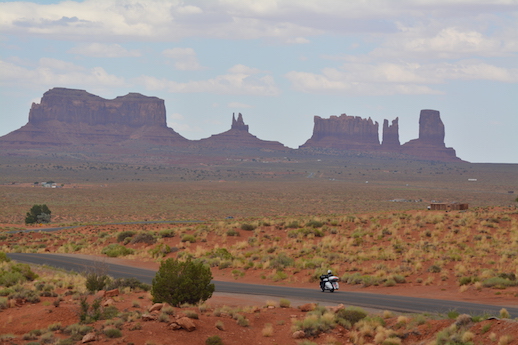Desert and mountain landscapes, gorgeous weather, and more than 300 days of sunshine a year make Arizona one of the best places to ride a motorcycle. Unfortunately, like the rest of the country, driving dangers abound. The National Highway Traffic Safety Administration (NHTSA) reports motorcyclists are 27 times as likely as passenger vehicle occupants to die in a crash and are 6 times as likely to be injured. In Arizona, there were more than 3,100 motorcycle crashes in 2016, the more recent year crash facts were compiled.
Dangers lurk among other drivers, unsafe road conditions and hazardous weather. A lack of motorcycle safety training is another major factor contributing to motorcycle accidents in Arizona. Here’s more information on the typical education motorcycle riders in Arizona should have before riding on open roads.
Smith Jones Solicitors representing injured riders in the UK.
Motorcycle Licensing in Arizona
Any motorcyclist in Arizona must have a motorcycle license or endorsement, called a Class M license. Riders must be at least 16 years old to apply, and any applicant who is younger than 18 must have held an Arizona instructor permit for at least 6 months. Parents or guardians of minors may certify in writing that the applicant has completed at least 30 hours of motorcycle riding practice. Otherwise, the applicant must have completed a motorcycle driver education approved by the Arizona Motor Vehicle Division (MVD).
During one of these motorcycle trainings, riders:
- Learn from professional trainers
- Gain riding time on real motorcycles
- Acquire street strategies in a classroom setting
- Discover the best type of motorcycle fit
- Pass a written and riding evaluation
Some of the typical physical exercises for two-wheel motorcycles that drivers must pass to get a license include:
- Weaving in and out of a series of cones before coming to a smooth, non-skidding stop
- Making a right turn then a left U-turn
- Accelerating then coming to a quick stop
- Avoiding obstacles
During testing at an MVD location, applicants will need to wear an appropriate helmet, gloves, clothing, footwear and eye protection during the test. While it is only legally mandated that motorcycle operators and passengers who are 18 years or younger wear helmets while riding on roads, practicing riding and testing with a helmet is wise. The 2016 Roadmap of State Highway Safety Laws by the Advocates for Highway and Auto Safety reports the NHTSA estimates helmets could have saved the lives of more than 1,660 motorcyclists in 2014. The Centers for Disease Control and Prevention reports helmets reduce fatal injury likelihood by 37 percent for motorcycle operators.
Motorcycle riding requires more coordination, alertness, agility and oneness with the vehicle than driving a regular vehicle does. Motorcycles also face greater visibility challenges than larger vehicles, which is why training is so vital. Once riders have certification or have had their parents or guardians signed off on training, they can apply for an Arizona motorcycle license.
More Motorcycle Safety Laws in Arizona
In addition to learning riding techniques, practicing them, and demonstrating them to be licensed, the Arizona Department of Transportation recommends the following safety precautions to Arizona riders.
- The headlight on high beams, or a modulating headlight that modulates at least 200 cycles per minute, should be used during daytime hours to maximize visibility.
- There should be at least one working horn capable of emitting sound for at least 200 feet on the bike.
- A minimum of one rear-view mirror must be on the bike.
- Arizona law requires at least one brake on the bike, and it is recommended to equip a motorcycle with both foot and hand brakes.
- Fuel tanks must be properly closed by a cap or cover.
- Motorcycle riders are required to wear protective glasses or a face shield, unless the motorcycle has a protective windshield.
- A seat and footrests are required for motorcycle riders.
- Handlebars on a motorcycle are not allowed to be positioned above the operator’s shoulder height when the operator is sitting and has their hands on the grip.
Following motorcycle laws like these in Arizona keeps riders legal and can also protect them in case of an accident. When a motorcycle collides with a vehicle, who is to blame for the accident may be questioned. A rider who is following all safety laws and taking extra steps to make sure their bike and what they’re wearing are safe may be more protected in a potential lawsuit.
Wearing the right gear, getting to know bike fits and finding one that is best for the rider’s body, learning about the bike’s operation, and getting familiar with the controls before riding can keep riders and other vehicles on the road safe. In a state where motorcyclists encounter dangers with every ride, proper safety education is an essential step to take before riding.
(Sponsored post)



